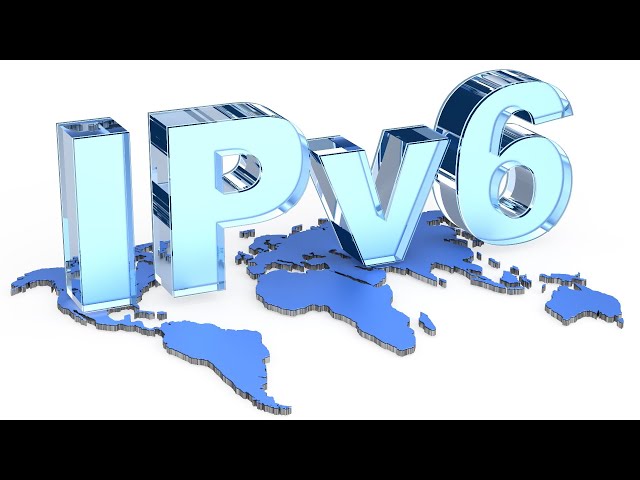Afew case studies of successful IPv6 deployments:
- LinkedIn: LinkedIn, the professional networking platform, successfully implemented IPv6 across its infrastructure. They started their IPv6 deployment in 2013 and completed the transition by 2016. LinkedIn took a phased approach, gradually enabling IPv6 on their website, mobile apps, and backend systems. They used dual-stack operation to support both IPv4 and IPv6, ensuring a smooth transition for their users. LinkedIn reported improved network scalability, simplified address management, and enhanced user experience with IPv6.
- Comcast: Comcast, one of the largest internet service providers in the United States, has made significant progress in deploying IPv6. They started their IPv6 deployment in 2011 and have since rolled out IPv6 to millions of their residential and business customers. Comcast employed various transition mechanisms, including dual-stack, 6rd, and DS-Lite, to provide IPv6 connectivity to their customers. Their successful deployment has contributed to the growth of IPv6 adoption in the United States.
- Facebook: Facebook, the social media giant, has been actively deploying IPv6 across its platform. They began their IPv6 deployment in 2011 and have achieved near-complete IPv6 availability for their users. Facebook employs dual-stack operation and works closely with ISPs and network operators to enable IPv6 connectivity for their users. They have also contributed to the development of IPv6-related technologies and standards, and regularly share their IPv6 deployment experiences to encourage broader adoption.
- ARIN: The American Registry for Internet Numbers (ARIN), one of the five Regional Internet Registries (RIRs), successfully deployed IPv6 within their own network infrastructure. ARIN provides IPv6 address space to organizations in North America and actively promotes IPv6 adoption. By deploying IPv6 themselves, ARIN gained valuable insights and first-hand experience with IPv6 deployment challenges. They share their deployment case study and best practices to assist other organizations in their IPv6 journeys.
- Swisscom: Swisscom, a leading telecommunications provider in Switzerland, completed a successful IPv6 deployment across their network infrastructure. They started their IPv6 deployment in 2011 and completed it in 2015. Swisscom employed a phased approach, enabling IPv6 on their fixed and mobile networks, as well as their customer-facing services. They used dual-stack operation and worked closely with equipment vendors and software developers to ensure compatibility and smooth transition. Swisscom reported improved network performance, simplified address management, and increased customer satisfaction with IPv6.
- AT&T: AT&T, one of the largest telecommunications companies in the world, has undertaken a significant IPv6 deployment effort. They began their IPv6 deployment in 2010 and have since made substantial progress in enabling IPv6 across their network infrastructure. AT&T has implemented dual-stack operation and leveraged various transition mechanisms to provide IPv6 connectivity to their customers. They have also actively engaged with equipment vendors, content providers, and other stakeholders to promote IPv6 adoption.
- Google: Google, the technology giant, has been a strong advocate for IPv6 deployment. They initiated their IPv6 deployment in 2008 and have made considerable advancements in enabling IPv6 across their services and platforms. Google employs dual-stack operation and has implemented extensive IPv6 support for their search engine, email services, and content delivery networks. They regularly share their IPv6 deployment experiences, best practices, and tools to assist other organizations in their adoption journeys.
- RIPE NCC: The Réseaux IP Européens Network Coordination Centre (RIPE NCC), one of the five RIRs, successfully deployed IPv6 within their own network infrastructure. RIPE NCC provides IPv6 address space to organizations in Europe, the Middle East, and parts of Central Asia. By deploying IPv6 themselves, RIPE NCC gained insights into the challenges and benefits of IPv6 adoption, which they use to support and provide guidance to their members and the broader Internet community.
- Microsoft: Microsoft has been actively working on IPv6 deployment across their products and services. They have implemented IPv6 support in their operating systems, cloud services, and enterprise solutions. Microsoft has made significant progress in enabling IPv6 connectivity within their Azure cloud platform, ensuring that customers can deploy IPv6-enabled applications and infrastructure. They have also shared their experiences and best practices in IPv6 deployment to aid organizations in their transition.
- Hurricane Electric: Hurricane Electric, a global internet service provider, has achieved notable success in deploying IPv6 across their network infrastructure. They offer IPv6 connectivity to their customers and have played an influential role in promoting IPv6 adoption. Hurricane Electric operates an extensive IPv6 backbone network and actively participates in IPv6 conferences and events, sharing their expertise and advocating for wider IPv6 deployment.
These case studies demonstrate the commitment of various organizations, including technology companies, service providers, and internet registries, to the deployment and promotion of IPv6. They showcase the different strategies, approaches, and technologies used to implement IPv6, highlighting the benefits of IPv6 adoption, such as improved scalability, address availability, and future-proofing of network infrastructure.
These case studies highlight successful IPv6 deployments by organizations across different sectors, demonstrating the feasibility and benefits of IPv6 adoption. They showcase the strategies, challenges, and best practices employed by these organizations to ensure a smooth transition to IPv6 and provide valuable insights to others planning their own IPv6 deployments.
